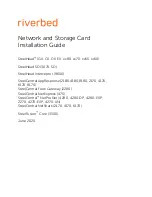
Glossary
D-5
Glossary
M
machine cycle:
See
CPU cycle.
mantissa:
A component of a floating-point number consisting of a fraction
and a sign bit. The mantissa represents a normalized fraction whose
binary point is shifted by the exponent.
maskable interrupt:
A hardware interrupt that can be enabled or disabled
through software.
memory-mapped register:
One of the on-chip registers that point to ad-
dresses in memory. Some memory-mapped registers point to data
memory, and somepoint to input/output memory.
memory width:
The number of bits that can be stored in a single external
memory address.
MFLOPS:
Millions of floating point operations per second. A measure of
floating-point processor speed that counts of the number of floating-point
operations made per second. Also called megaflops.
microcomputer mode:
A mode in which the on-chip ROM (boot loader) is
enabled. This mode is selected via the MP/MCBL pin.
microprocessor mode:
A mode in which the on-chip ROM is disabled. This
mode is selected via the MP/MCBL pin. See also
MP/MC pin.
MIPS:
Million instructions per second.
miss:
A condition in which, when the processor fetches an instruction, it is
not available in the cache.
MSB:
Most significant bit. The highest-order bit in a word.
multiplier:
A device that generates the product of two numbers.
N
NMI:
Nonmaskable interrupt. A hardware interrupt that uses the same logic
as the maskable interrupts but cannot be masked.
















































